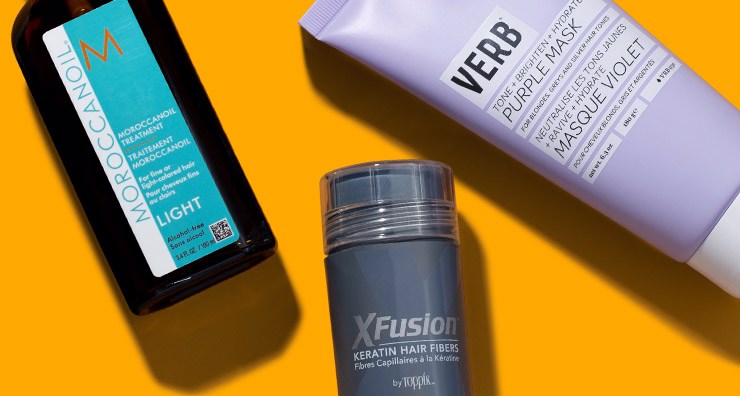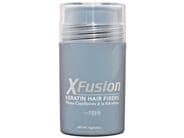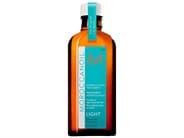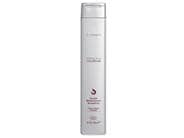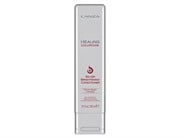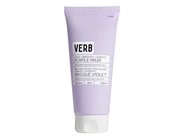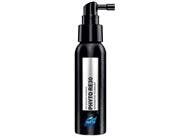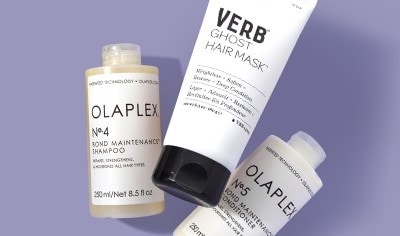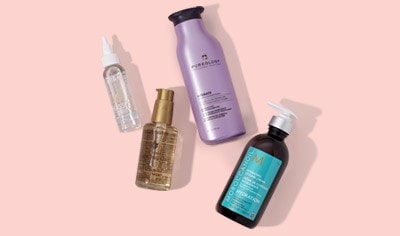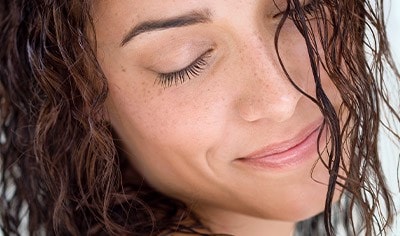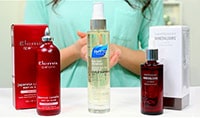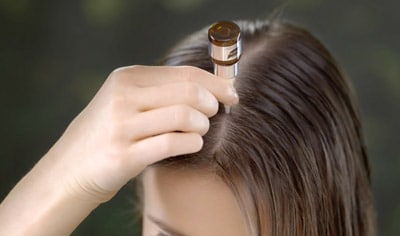When hair starts to go gray, there are two routes to take. Do you embrace your new silvery locks, or do you choose to cover the gray to prolong the look of your natural hair color? With the rise of the grombre movement, going gray has certainly become trendier in recent years, making it more popular than ever to embrace and enhance gray hair, but the choice to embrace or erase gray hair is a very personal one, nonetheless. With new treatment innovations on the horizon, there may even be ways to reverse the graying of hair in the future as well. Read on to learn more about the pros and cons of going gray, plus our favorite product picks to help you along the way:
“Recent research has shown a direct correlation between stress and gray hair development. Interestingly, this stress, when reversed, led to reinstatement of naturally colored hair,” Dr. Schlessinger says. “It isn't always possible to reverse stress, but in some situations—illness, divorce, grief—stress can be managed and, with luck, lessened.”
Sudden hair whitening, or canities, is also called Marie Antoinette syndrome, where hair at the scalp turns white in a very short period of time. “Presumably, Marie Antoinette’s hair completely turned white the night before she went to the guillotine,” Dr. Schlessinger says. “Given that she was the tender age of 38 when she was killed, that would be unusual, save for the intense stress of the experience.”
There may be treatments on the horizon that could potentially reverse the graying or whitening of hair. “The most intriguing possibility for gray hair is to stop it by stimulating stem cell factor (SCF), something that is a natural darkener of hair. As we age, SCF decreases, leading to gray hairs,” Dr. Schlessinger says. “It is completely possible that within the next few years or decade we may have a way to turn SCF back on, leading to dark hairs returning. So whatever the case, don’t lose your head over gray hair—though Marie Antoinette had no choice—as there may be hope on the horizon!”
While more people are embracing their gray every day, others prefer to preserve their natural color. If you’re not ready for silver, you can try a permanent or semi-permanent color treatment to cover gray hair.
Permanent color vs. semi-permanent color
What is the best color for gray hair coverage? Well, both permanent color and semi-permanent color have their upsides and downsides. To find out which method best suits you, think carefully about the pros and cons of each.
Pros of permanent color:
Involves opening the hair shaft with a developer, which activates the color, allowing it to penetrate more effectively
Fades more gradually than semi-permanent color
Works well on hair that is mostly gray, silver or white, as it adds pigment back into hair
A wider range of natural-looking shades is available, making it easier to match your natural hair
Cons of permanent color:
-The process of bleaching hair and breaking down the hair cuticle may irritate skin if the chemicals come in contact with the scalp
-Is often times more damaging than semi-permanent color
-If not done professionally, some colors may appear one-dimensional
-Fashion colors (e.g. reds, blues and greens) are harder to come by
Pros of semi-permanent color:
+Typically less damaging than permanent color treatments
+Ideal for little to moderate amounts of gray
+Tones and tints gray, creating highlights that blend with natural hair
+Easier to revert back natural hair if you don’t love the color
Cons of semi-permanent color:
-Fades faster than permanent color
-Requires touch-ups more often
-Unable to fully cover gray hair and may be ineffective for those whose hair is mostly gray
-Smaller selection of natural shades is available when compared to those available in permanent shades
Since gray hair tends to be drier and coarser than pigmented hair, colors may not penetrate strands as well. Because of this, treatments take longer and generally cause more damage. To help remedy this damage to color-treated hair, incorporate a nourishing mask into your hair care routine. Deeply conditioning hair masks like the Rene Furterer OKARA Color Protection Mask increase vibrancy while repairing damage. This particular mask uses Okara extract derived from soybean pulp which is designed to support and strengthen strands while witch hazel helps to maintain color.
How to cover gray hair
Even if you take care of color-treated hair, regrowth comes with its share of frustrations, namely figuring out how to cover gray roots. Gray roots often become visible well before a trip to the salon and a full recolor is needed. Here are two of our favorite options to use on gray roots in between visits to the salon.
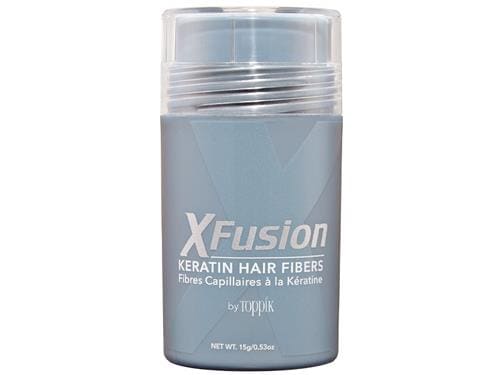
Similar to those with naturally fair hair, silver and white roots may appear sparse as they grow out. Sometimes, this makes hair look like it’s thinning around your part and hairline even though it’s not. This hair care product is commonly used for improving the appearance of thinning hair, and it also does a great job to cover the gray by concealing roots. Made with pigmented keratin protein, these fibers attach to hair, instantly adding color and thickness to the area. While these fibers easily wash out with shampoo, they resist wind, rain and sweat to ensure you’re covered in all conditions.
Pro-tip: This product is also perfect for beard care! If grays are making your beard appear too light and sparse, XFusion Keratin Hair Fibers can help fill in and darken facial hair as well.
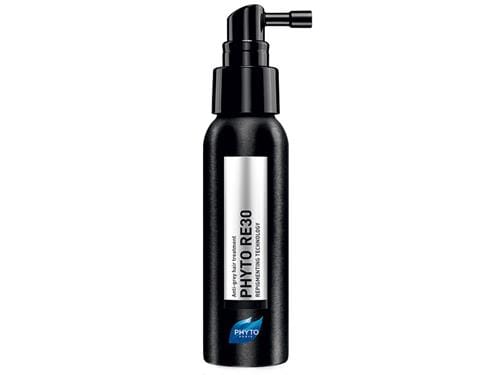
Six years of research went into developing the proprietary peptide, called RE30, in this hair treatment. With daily use, this product is designed to actually help repigment hair—that is, turn it back to your natural pre-gray color—at the root. “This is really the first topical treatment out there that helps reverse and delay graying hair,” says board-certified dermatologist and LovelySkin CEO Dr. Schlessinger says. “Patience and consistency are important, though, as it takes about three months of daily use to start to see results.”
While embracing your gray is low-maintenance compared to color-treated hair, it still requires special attention. Here are three of our favorite hair care products for enhancing gray hair and keeping it looking lustrous.
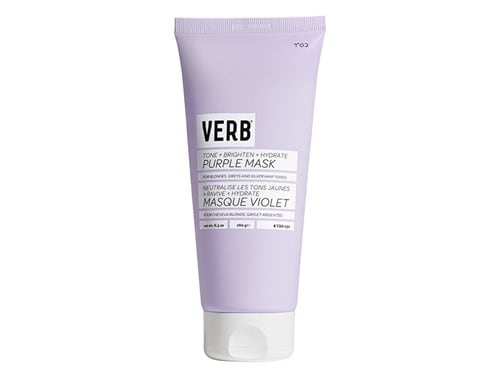
Most silver hair comes with unwanted brassy, yellow tones. You can help eliminate the look of brassiness and make way for a beautiful ashen gray by using a violet-pigmented treatment such as this hair mask from Verb. It helps bring out a brighter tone in lighter hair, whether gray, white or color-treated blonde. It can also help hydrate and soften strands as well as protect against environmental damage with antioxidant-rich acai fruit extract. It’s designed to be used once weekly after shampooing, and you can rinse after five to seven minutes of treatment time.
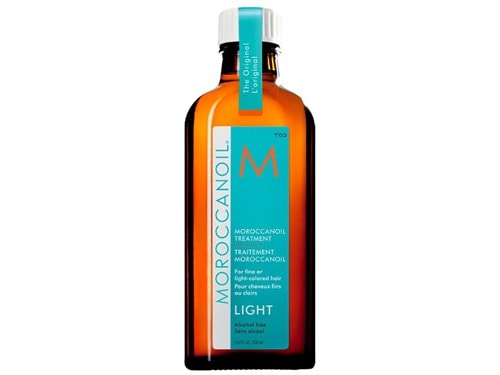
Since gray hair notoriously struggles with dullness, adding a hair treatment such as Moroccanoil Treatment Light can really help when it comes to enhancing gray hair. It contains antioxidant-rich argan oil, which can help smooth the hair cuticle, improve manageability and boost shine. This Moroccanoil hair treatment can also help repair damage sustained during color treatments, making it the perfect addition to your hair care routine whether you’re looking to enhance gray hair or continue to cover gray hair with permanent or semi-permanent color.
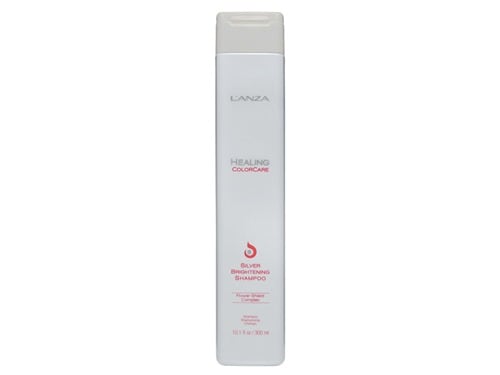
Choosing a shampoo and conditioner that enhance gray hair can go a long way to help keep your silvery mane looking its best. These extra-gentle formulas help to neutralize brassy tones in gray and platinum hair tones. Both the shampoo and conditioner contain keratin to help boost strength and shine, breathing life back into dull strands.
Now that you’re fully versed on enhancing gray hair or making moves to cover gray hair, learn more about innovative hair care brand OLAPLEX, which is safe to use on color-treated hair.


